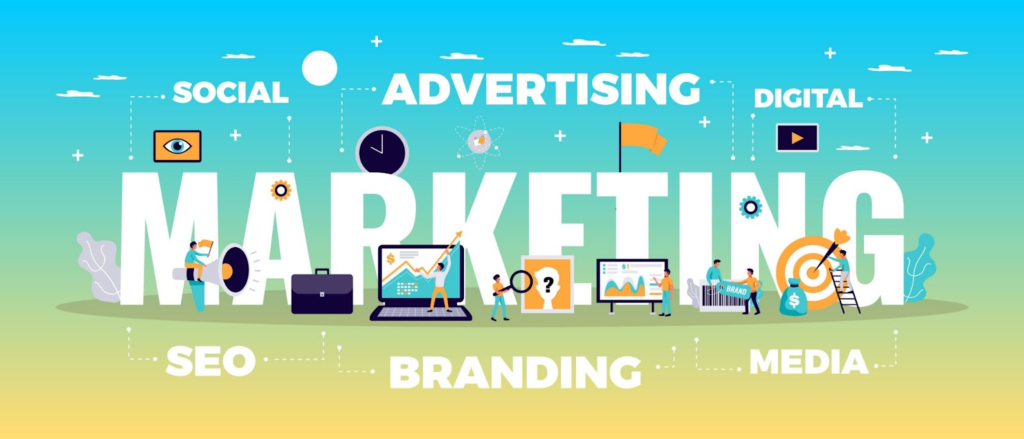In the digital age, online shopping has become more and more prevalent. With the convenience of online shopping, more and more customers are opting to purchase items online instead of heading to a physical store. As a result, having an e-commerce website has become essential for businesses.
However, having a website alone is not enough. An e-commerce site must be designed in such a way that it is easy to navigate and encourages customers to make a purchase.
In this post, we’ll explore the key elements that go into building the perfect e-commerce website that will turn clicks into sales. From the design and layout to the checkout process and product descriptions, we’ll cover everything you need to know to ensure your e-commerce website is a success.

Understanding The Importance of A Great eCommerce Website Development
It’s no secret that the world of commerce has shifted online over the past decade. As a result, having a great e-commerce website is more important than ever before. Your website is often the first point of contact for potential customers, and it can be the deciding factor in whether or not they choose to make a purchase from you.
A great ecommerce website development should be easy to navigate, visually appealing and provide a seamless user experience. It should be designed with the customer in mind, making it easy for them to find what they need quickly, and ultimately make a purchase without any obstacles.
Studies have shown that a poorly designed website can turn off potential customers, with slow loading speeds, confusing navigation, and a lack of clear product information being the main culprits. On the other hand, a well-designed website can help build trust with your customers, improve brand image, and ultimately lead to higher conversion rates and sales.
In today’s digital age, having a great e-commerce website is not just a nice-to-have, it’s a necessity. It’s an investment in your business that can help you stand out from the competition and build long-term success.
Essential Features of An eCommerce Website
When building an e-commerce website, there are several essential features that must be included to ensure a successful online store. First and foremost, your website must be user-friendly and easy to navigate. Customers should be able to find what they are looking for quickly and easily, without having to jump through hoops.
Another essential feature is a search bar. Customers often come to a website with a specific product or idea in mind, and having a search bar on the homepage can help them find it faster.
Additionally, having multiple product images from different angles, zoom functionality, and even videos can help customers make informed purchasing decisions and feel more confident in their choices. A clear and concise product description is also essential. This should include all relevant information such as product dimensions, materials, and care instructions.
It’s also important to include pricing and any available discounts or promotions. Having a secure and streamlined checkout process is crucial in converting clicks into sales. Customers should feel confident in their purchase, and having an SSL certificate and offering multiple payment options can help with this. Additionally, offering free shipping or a clear shipping cost calculation can help reduce cart abandonment rates.
Finally, an e-commerce website should have clear contact information and a robust customer service system. Customers should be able to easily contact you with any questions or concerns, and having a clear return policy and customer service process can help build trust and loyalty with your customers.
Designing The Perfect Homepage for eCommerce Website
Designing the perfect homepage is crucial to the success of any e-commerce website. The homepage is the first point of contact with potential customers, and it needs to make a great first impression. Your homepage should be well-organized, visually appealing, and easy to navigate. The layout of your homepage should be clean and simple, with a clear hierarchy of information. Your logo should be prominently displayed, and your navigation menu should be easy to find and use.

Make sure your homepage showcases your most popular products or current promotions, so visitors can quickly and easily see what’s available. It’s also important to make sure that your homepage is optimized for search engines. This means including relevant keywords in your headlines and content and making sure that your page titles and meta descriptions accurately reflect the content of your site. This will help potential customers find your site more easily when they search for relevant keywords.
In addition, your homepage should be optimized for mobile devices. More and more people are accessing the internet on their smartphones and tablets, so it’s important to make sure your homepage looks great on these devices. Make sure your images are optimized for mobile screens and that your page is easy to navigate with a touch screen.
Finally, it’s important to make sure that your homepage is fast and responsive. Slow load times and unresponsive pages can drive potential customers away, so it’s important to optimize your site for speed. This means using compressed images, minimizing the use of third-party scripts, and optimizing your CSS and JavaScript files. A fast, responsive homepage will keep visitors engaged and more likely to make a purchase. If you are looking for a web development company in Jaipur that specializes in e-commerce websites, then Premad Software Solutions might be the best option. Providing new technologies to its customers is very good, and the company delivers products on time.
Creating An Intuitive Navigation System
Creating an intuitive navigation system is crucial for any e-commerce website. A well-designed navigation system ensures that customers can easily find what they are looking for on your website. A complicated or confusing navigation system can quickly frustrate customers and lead them to leave your website without making a purchase.
To create an intuitive navigation system, start by organizing your products and services into logical categories. Use clear and concise labels that accurately describe the type of products or services in each category. Avoid using overly complicated or technical language that may confuse customers. It’s also important to consider the placement of your navigation menu. A common practice is to place the menu bar at the top of the page or on the left-hand side. This makes it easy for customers to locate the menu and browse through the different categories.
Finally, test your navigation system with real customers to identify any areas that may be confusing or difficult to use. This feedback can help you make necessary improvements to create a seamless and intuitive navigation system that will keep customers on your website and lead to more sales.
Building Trust With Your Customers
Building trust with your customers is an essential part of any successful e-commerce business. Customers are putting their trust in your website to provide them with quality products and a secure shopping experience. Here are a few ways to build trust with your customers:
Make Your Website Secure
Customers need to feel confident that their personal and financial information is safe when shopping on your website. Make sure your website is secure with an SSL certificate and use secure payment gateways to process transactions.
Display Customer Reviews and Ratings
Displaying customer reviews and ratings on your website can help build trust with potential customers. Reviews and ratings provide social proof and can help customers feel more confident in their purchase decisions.
Provide Excellent Customer Service
Providing excellent customer service is key to building trust with your customers. Make it easy for customers to contact you with questions or concerns, and make sure you respond promptly.
Be Transparent
Be transparent with your customers about your products, pricing, and shipping policies. Customers appreciate honesty and transparency, and it can help build trust.
Offer a Satisfaction Guarantee
Offering a satisfaction guarantee can help build trust with your customers. If a customer is not satisfied with their purchase, they know they can return it and receive a refund or exchange.
ALSO READ Unlocking Potential: Mobile Application Design and Development
“Building trust with your customers takes time and effort, but it is essential for the long-term success of your e-commerce business. By implementing these strategies, you can build a loyal customer base that will keep coming back to your website.”
The Importance of Product Pages
Product pages are the main selling point of your e-commerce website. They are the final step in the purchase journey for your customers and can be the make or break point of a sale. Therefore, it’s important to put effort into creating the perfect product pages.
Firstly, always use high-quality images that showcase the product from different angles. Images should be clear, bright, and big enough for customers to zoom in on and see the details. Additionally, including a video of the product being used or demonstrated can help customers get a better feel for the product.
Secondly, make sure your product descriptions are clear and detailed. Customers need to know exactly what they are getting when making a purchase online, so provide information about the product’s features, dimensions, materials, and any other relevant details. This will help customers make informed decisions and reduce the likelihood of returns.
Thirdly, include customer reviews on your product pages. Seeing positive reviews from other customers can help reassure potential buyers about the quality and reliability of your products. Encourage customers to leave reviews by sending follow-up emails after purchases or offering incentives for leaving a review.
Finally, make the purchase process as easy and streamlined as possible. Include clear calls to action, such as “add to cart” and “checkout”, and make sure the process is easy to navigate. By creating a seamless user experience, you can increase the likelihood of conversions and repeat business.
Creating An Easy Checkout Process
Creating a seamless and easy checkout process is one of the most crucial factors in converting clicks to sales. When a customer has decided to purchase from your website, the last thing you want is for them to abandon their cart due to a complicated checkout process.

Start by minimizing the number of steps a customer has to go through before completing their purchase. The checkout process should be streamlined and simple, with minimal form fields and distractions. Offering multiple payment options can also help to make the checkout process easier for customers. Accepting credit and debit cards, PayPal, Apple Pay, and other popular payment methods can help to boost customer confidence and encourage them to complete their purchase.
Finally, make sure to optimize the checkout process for mobile devices. With more and more customers shopping on their smartphones and tablets, having a mobile friendly ecommerce website checkout process is essential.
Optimizing for Mobile Users
Mobile optimization is no longer optional for any e-commerce website. With a growing number of customers using their smartphones and tablets to browse and shop online, failing to optimize your website for mobile devices could mean losing potential customers. To begin with, ensure that your website is fully responsive and adapts to different screen sizes. This means that whether a customer is using a desktop, a tablet, or a smartphone, your website should be optimized to fit their screen size perfectly, ensuring an optimal browsing and shopping experience.
Next, consider the loading speed of your website. Mobile users tend to have a much lower tolerance for slow-loading websites, so ensure that your website is optimized for fast-loading speeds. This can be achieved by compressing images, reducing the number of HTTP requests, and minimizing the use of large files or heavy scripts. Another important aspect of mobile optimization is ensuring that your website is easy to navigate on a mobile device.
This means having easy-to-use navigation menus, large buttons, and clear calls to action, all designed with the mobile user in mind. By implementing these mobile optimization strategies, you can ensure that your e-commerce website is fully optimized for mobile users, providing an optimal browsing and shopping experience for all your customers, regardless of the device they are using.
How to Handle Returns and Refunds
Returns and refunds can be a headache for any e-commerce business. However, it’s important to have a clear and easy-to-understand returns policy in place to help customers feel comfortable and confident in making a purchase from your website. First and foremost, make sure your policy is easy to find and understand. This can be done by placing it in a prominent spot on your website, such as the footer or checkout page, and using clear language that your customers will understand. It’s also important to have a clear process for returns and refunds. This can include providing customers with a return label, specifying the time frame for returns, and outlining any conditions for refunds, such as items being unworn or in their original packaging.
Increasing eCommerce Website Sales Through Marketing and Advertising.
Marketing and advertising are essential to increasing sales for your e-commerce website. Creating a solid marketing plan is crucial to ensure that your target audience is aware of your brand and products. Social media is a powerful tool that can be used to reach out to potential customers. Facebook, Instagram, and Twitter are great platforms where you can showcase your products and engage with your audience. You can also use paid advertising on these platforms to reach a wider audience.

Email marketing is another effective way to promote your products. By collecting email addresses from your customers, you can send them newsletters highlighting new products, promotions, and discounts. Personalized emails that address the customer by their name and recommend products based on their previous purchases are also a great way to increase sales.
Finally, offering free shipping and discounts can also encourage customers to make a purchase. These promotions can be advertised on your website or through your marketing channels to entice customers to make a purchase.
Conclusion
In conclusion, marketing and advertising are vital components of building a successful e-commerce website. By creating a solid marketing plan and utilizing various channels, you can increase brand awareness and drive sales for your business. We hope you enjoyed our article on building the perfect e-commerce website.
Whether you’re a seasoned e-commerce veteran or just starting out, there are always ways to improve your website and increase your sales. By following the tips we provided, you’ll be well on your way to building a website that effectively converts clicks into sales. Remember that your website is your digital storefront, so invest in it wisely and make it the best it can be. Thanks for reading, and happy selling!


